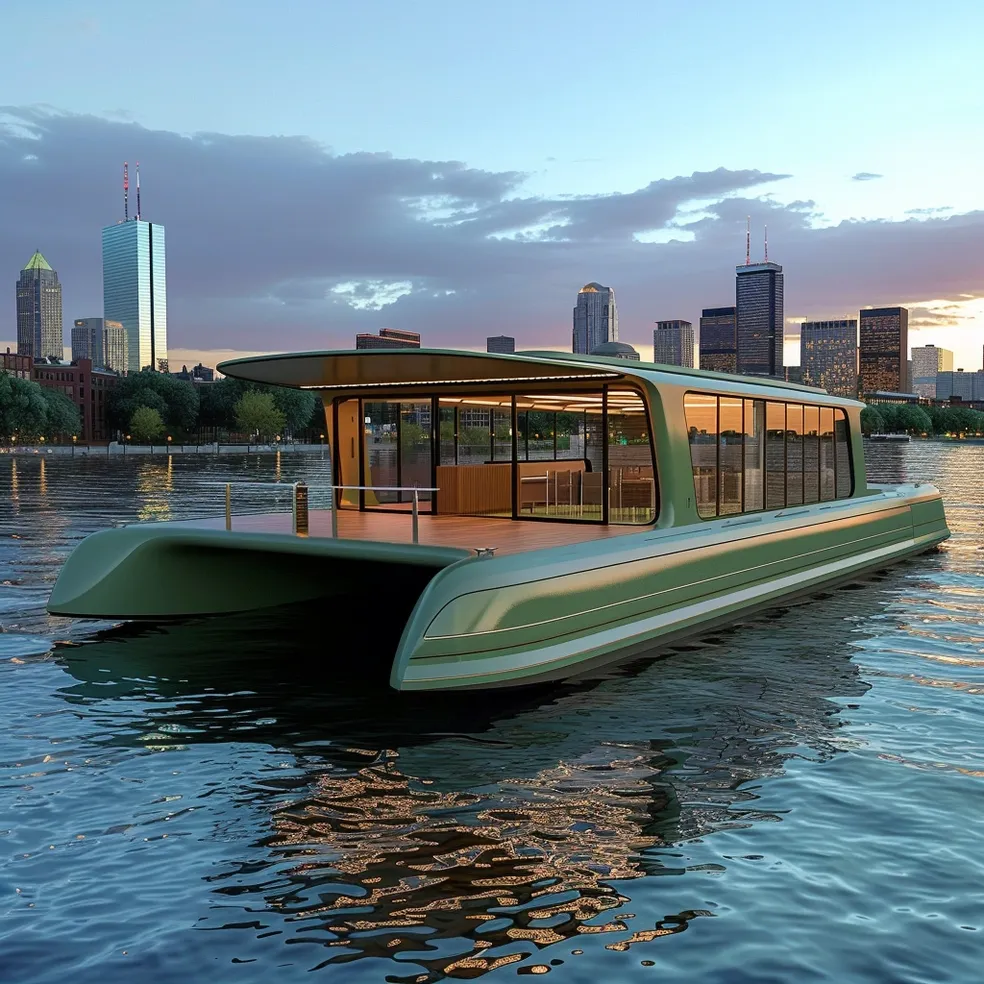
A small version of the Wada Hoppah electric water shuttle may be carrying passengers from Watertown to Boston and back this spring, and the man behind the effort has plans to create a whole e-boat building industry in the Boston area.
Drew Rollert’s goal is to have the first shuttles sailing on the Charles River by the time of the Boston Calling music festival on Memorial Day weekend.
“We’re gonna do a smaller version while we work on the bigger electric boat, because I’m just sick of not having anything and just waiting for the large thing,” Rollert said. “So we started building (the smaller boat).”
The big boat is 60 feet long, and will have bathrooms and a coffee bar and will be able to carry around 40 people. The smaller one will not be all-season and will seat between 9 and 12 passengers, but will be wakeless and electric, Rollert said.
“It just doesn’t have all the bells and whistles,” he said. “So while I work on all the capital for the larger one, we’re going to have this in the water.”
In December 2024, the larger boat being designed by Wada Hoppah received the Gussie Award for Electric Commercial Passenger Vessels: In Development.
“The award is huge,” Rollert said. “That was like the Oscars of the boat design world — really freaking big. We beat six countries — countries! — that already have electric water shuttles on the riverways.”
Wada Hoppah has made progress, securing a charging location at the Newton Yacht Club, and getting approval to launch a pilot program from the Department of Conservation and Recreation, the state agency that oversees the Charles River.
While in the short-term Rollert has his eye on a smaller boat, he has much bigger ambitions which go beyond the waters of the Charles River. He has his sights set on making the Boston area a hub for electric passenger boat building.
The MBTA runs several ferry routes, and its fleet is aging, Rollert said. The 2022 MBTA Transit Asset Management Plan found that 88 percent of the MBTA’s ferries are beyond their useful life, and the Plan reads, “When a vehicle exceeds the useful life benchmark age, it is considered not in a State of Good Repair.”
The MTBA’s ferries are diesel powered, and frequently require repairs, said Rollert, who would like them to be replaced with a fleet with a smaller carbon footprint by using electric boats.
“The whole thing in the United States, not just Boston, is a problem right now, and there’s nobody out there who’s really replacing them,” Rollert said, adding that San Francisco recently purchased three 150-passenger, electric powered ferries.
Rollert envisions creating a large electric boat production facility in or around Boston.
“We used to build battleships in the (Boston) Harbor, and now all those dry docks and stuff like that are just empty. We have a spot picked out that we’re dealing with the state on,” he said. “It’s looking good. And if I can make sure that it goes through, we could basically make them here. I want to have Boston be the hub of 21st century for all electric ships.”
Other countries have already established electric boat and ship building industries, but unlike other vehicles a federal law, called the Jones Act, requires all commercial boats used in the United States to be made domestically.
Rollert hopes the State’s Climate and Energy Plan for 2050 goals also fuel the need for electric ferries.
“The state has a law about decreasing carbon emissions for the next 25 years,” he said. “And by 2050 it wants to be either carbon neutral or carbon free.”
Can’t wait to ride!